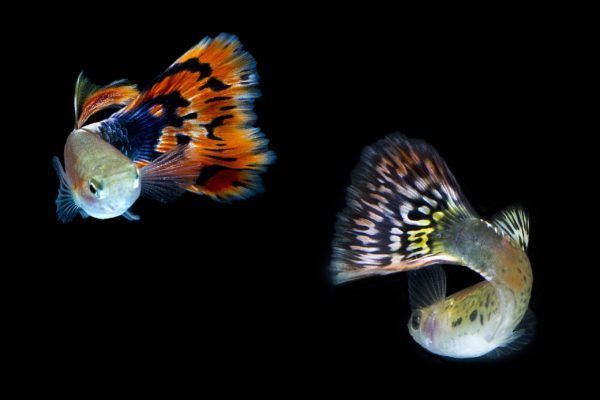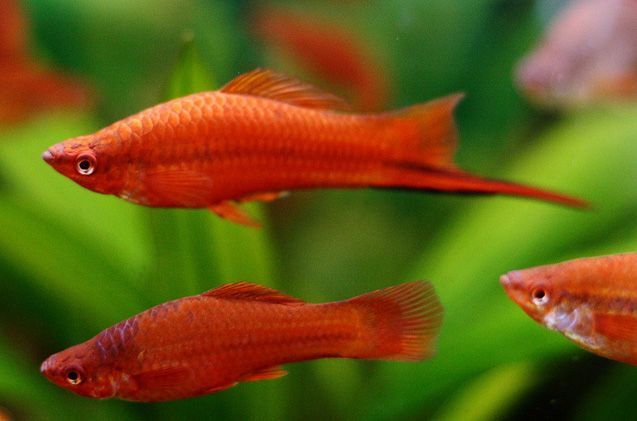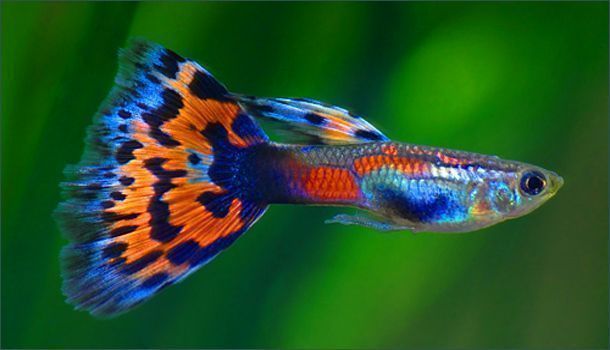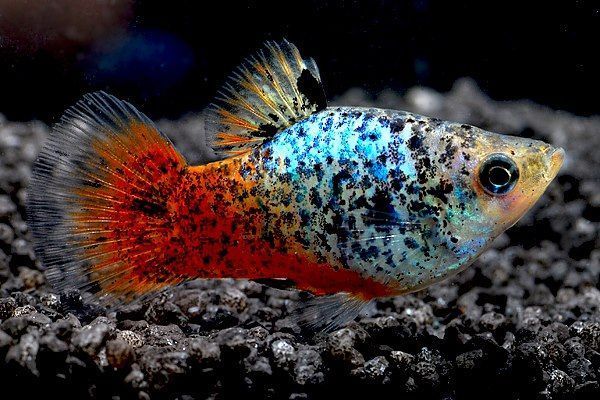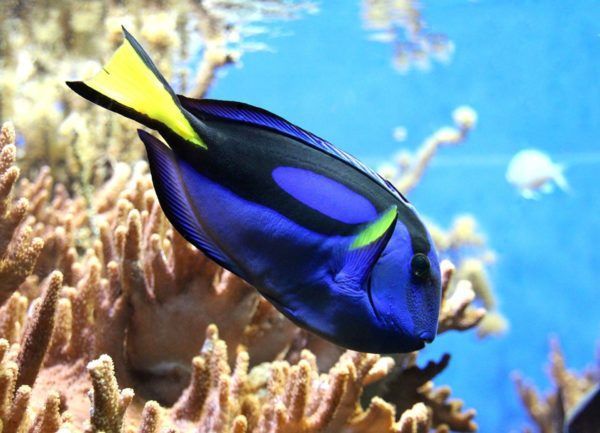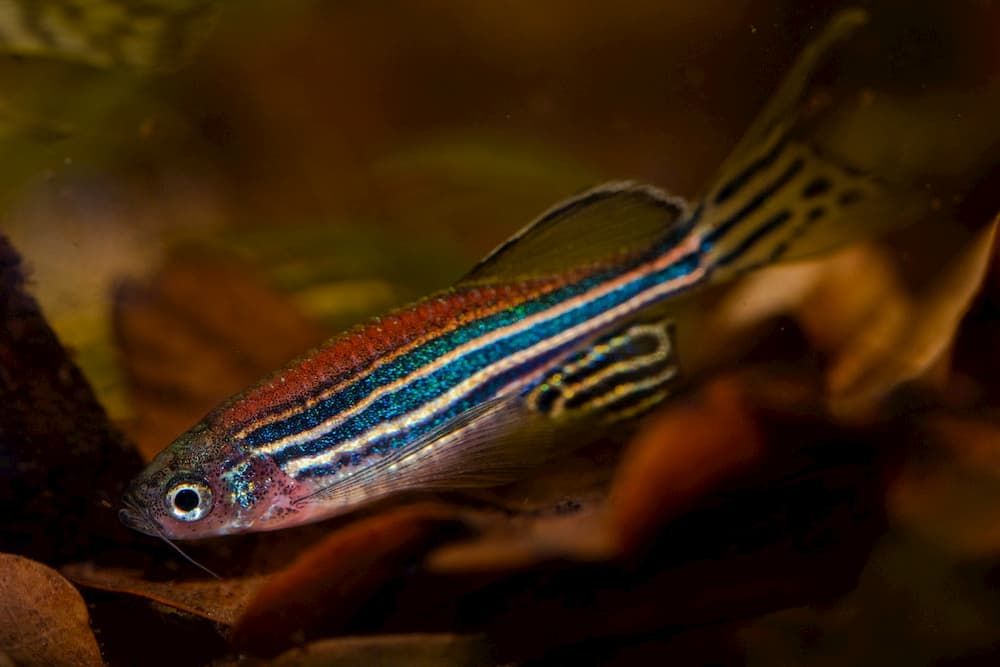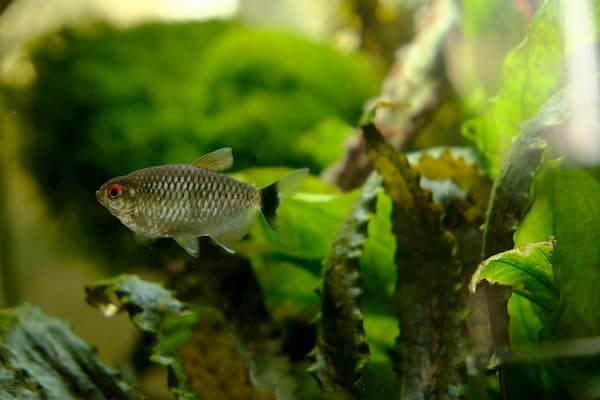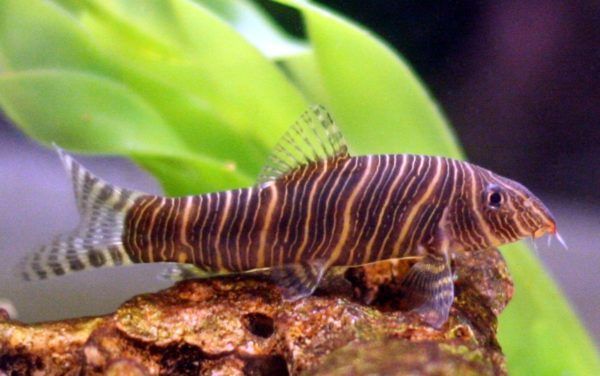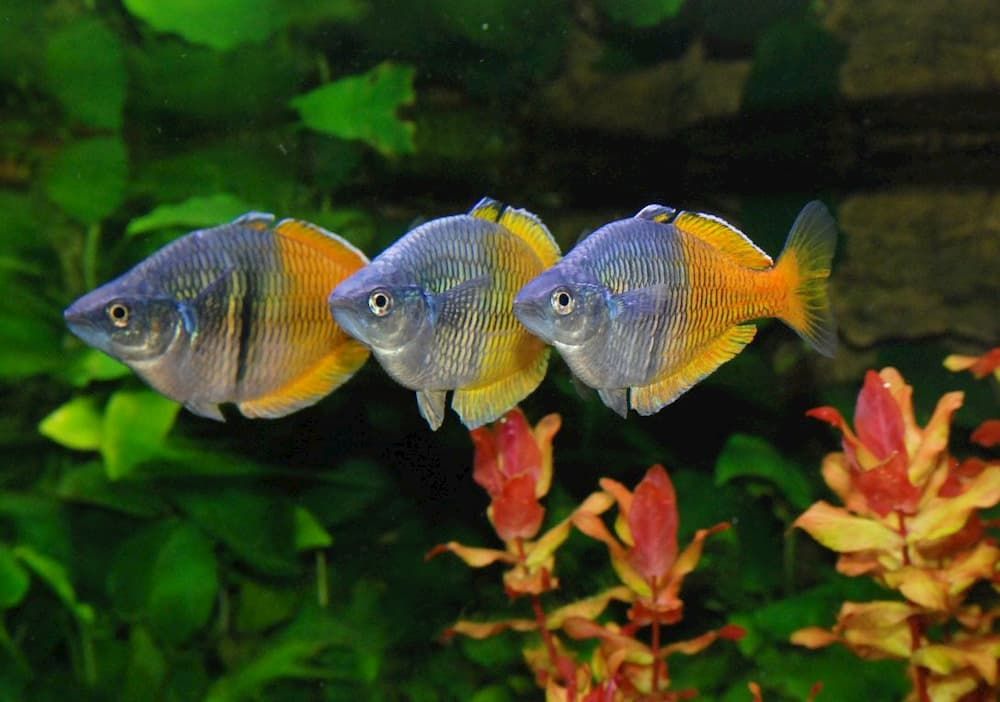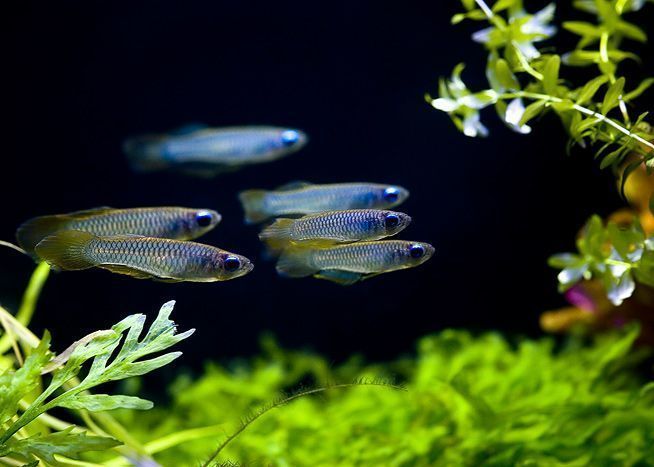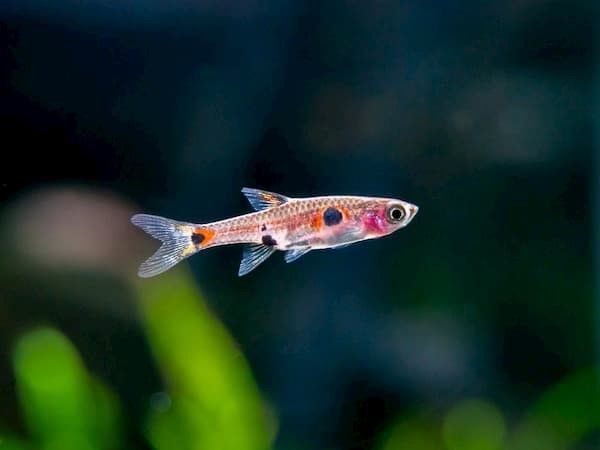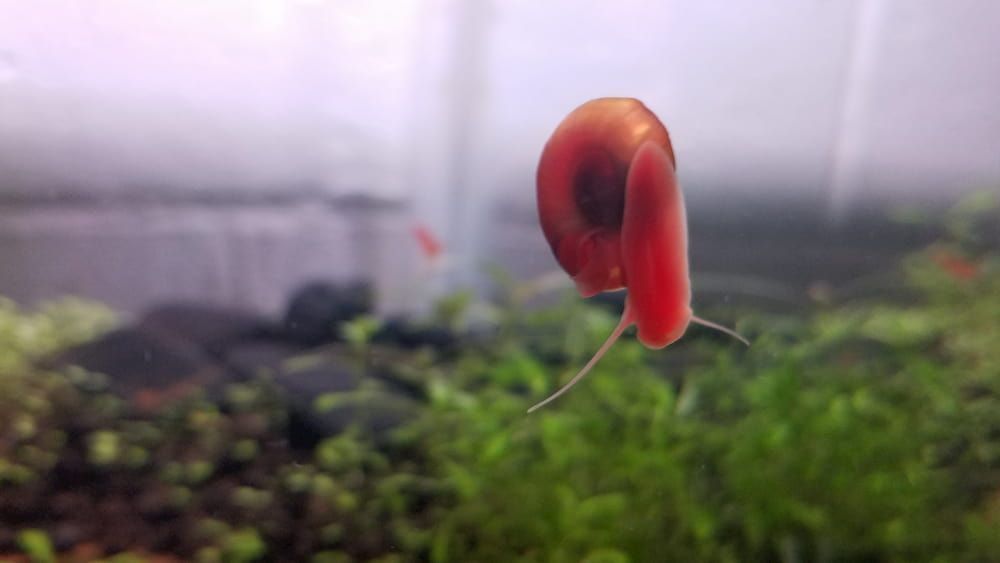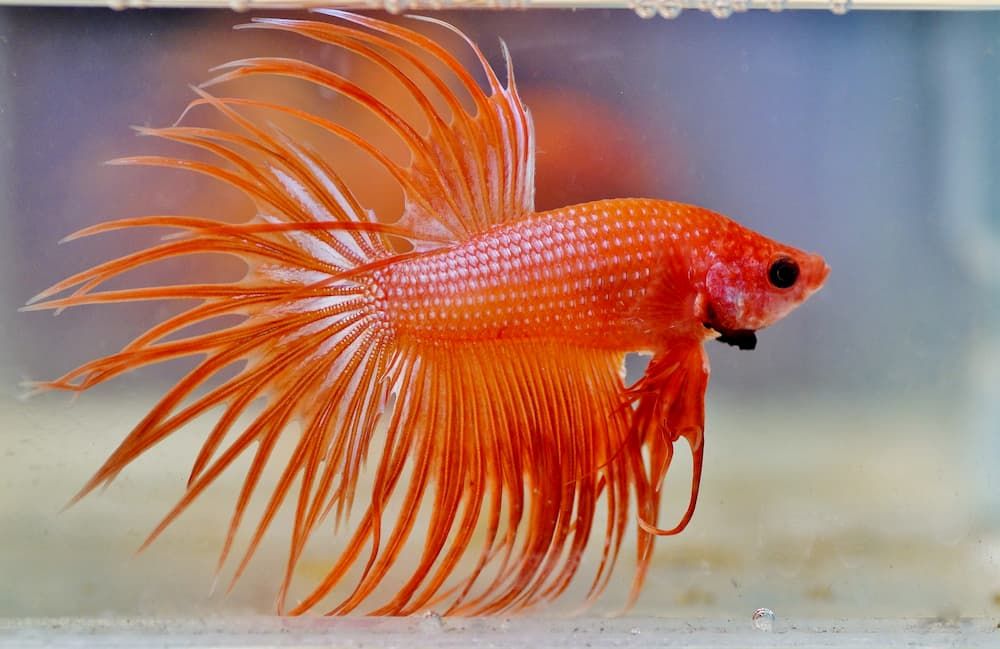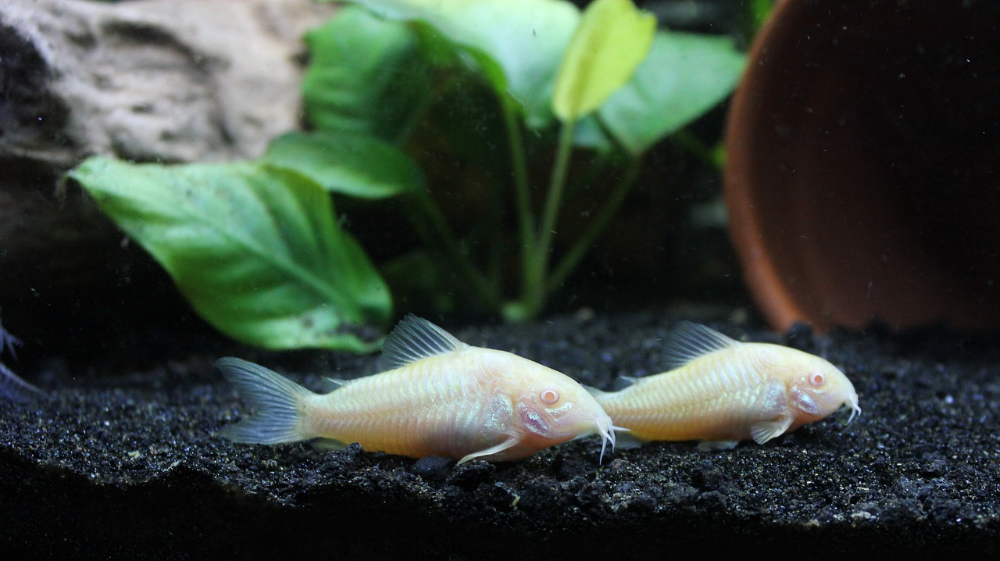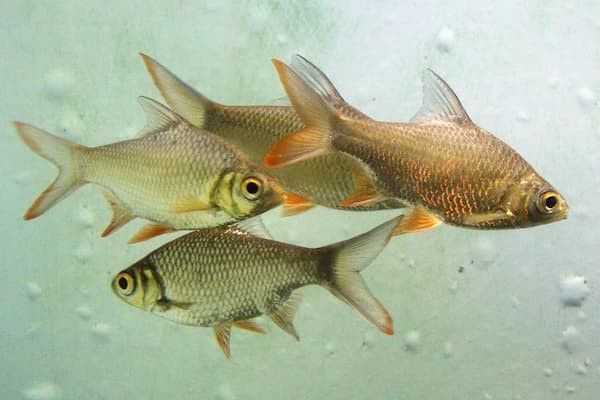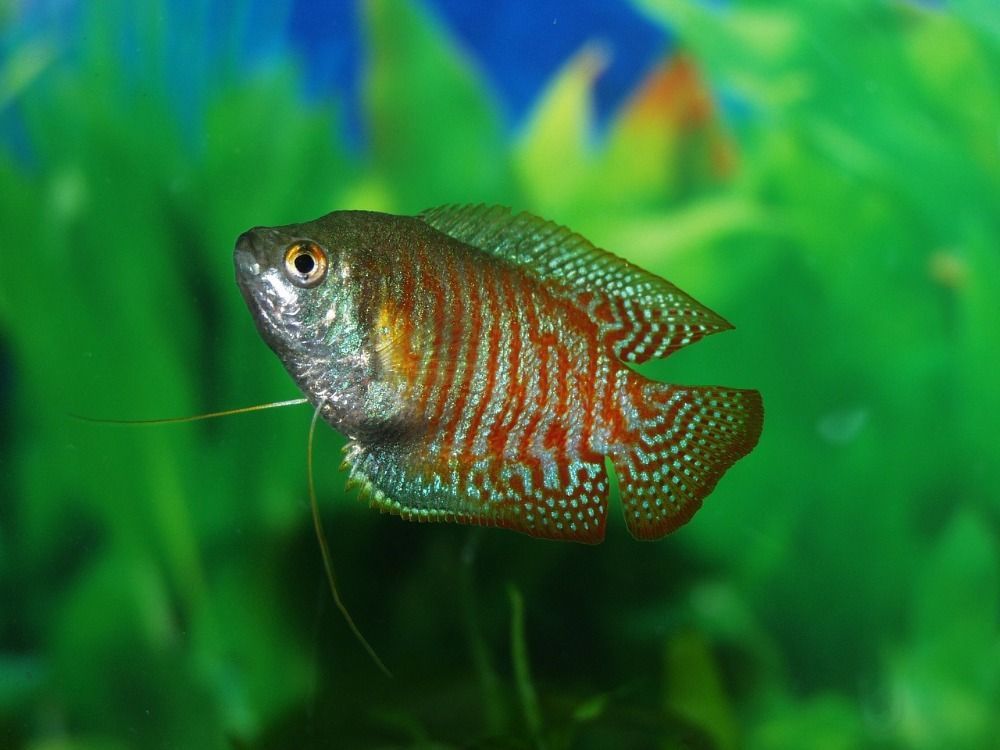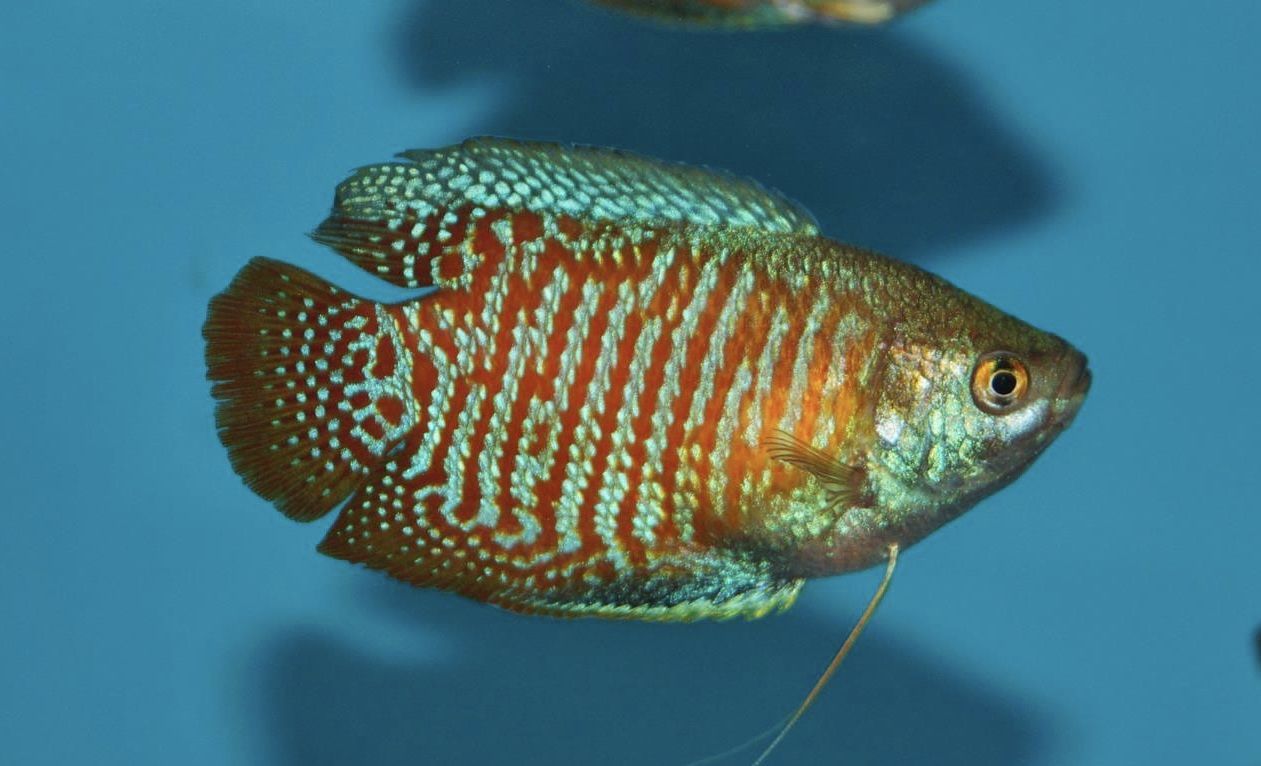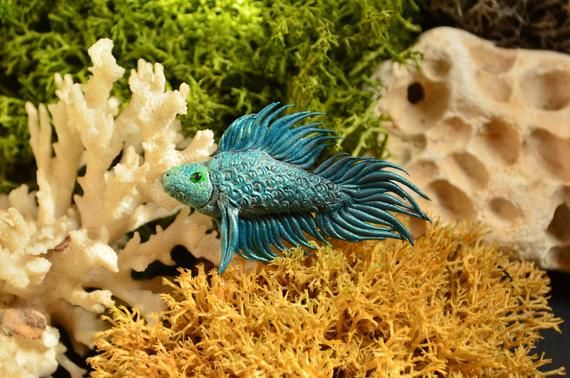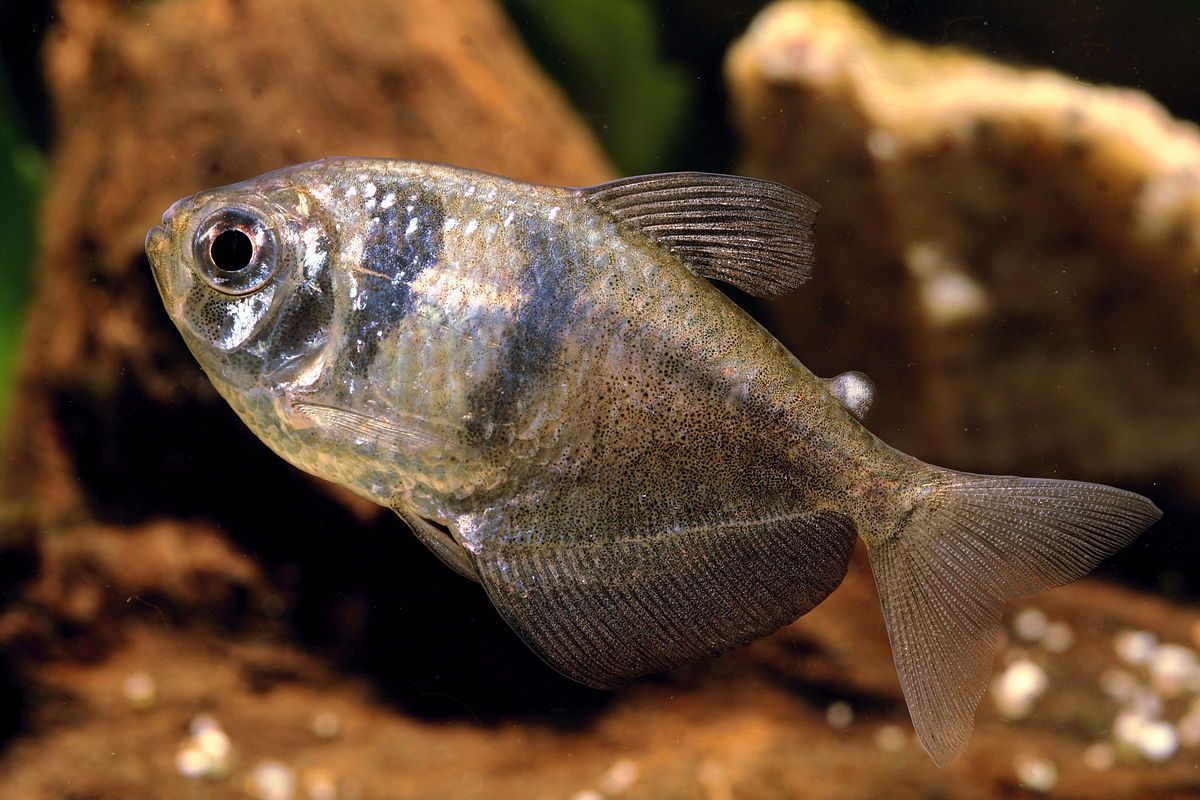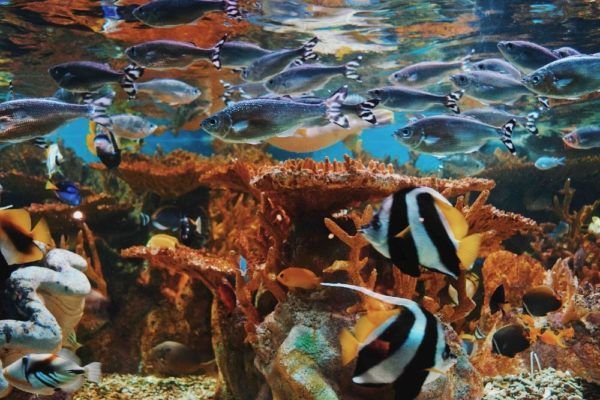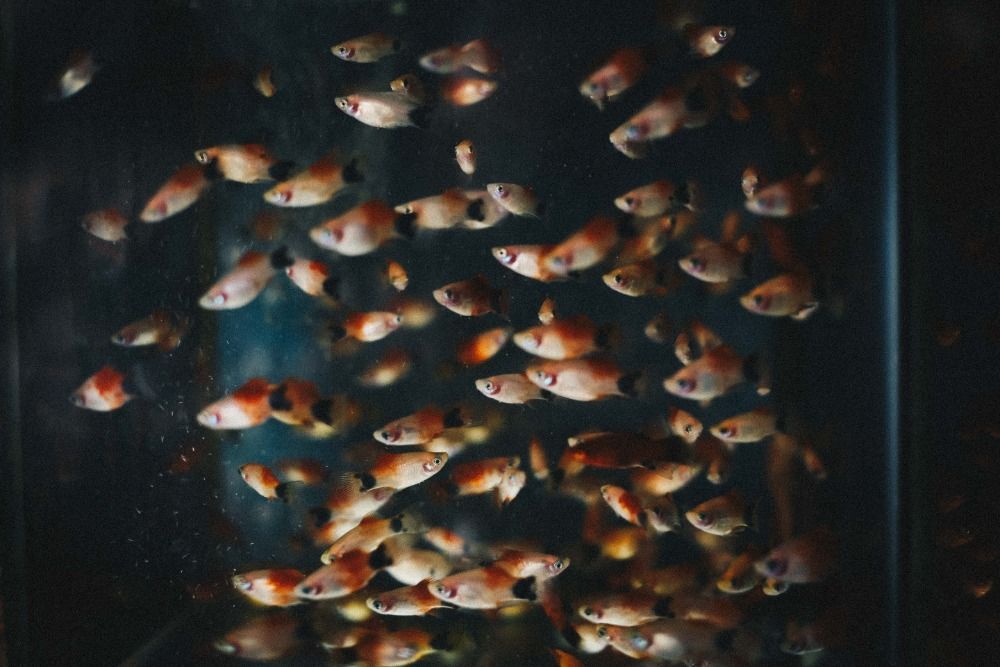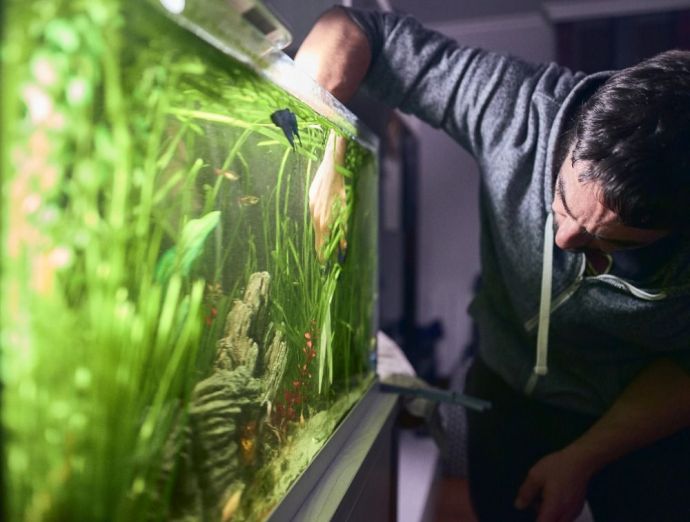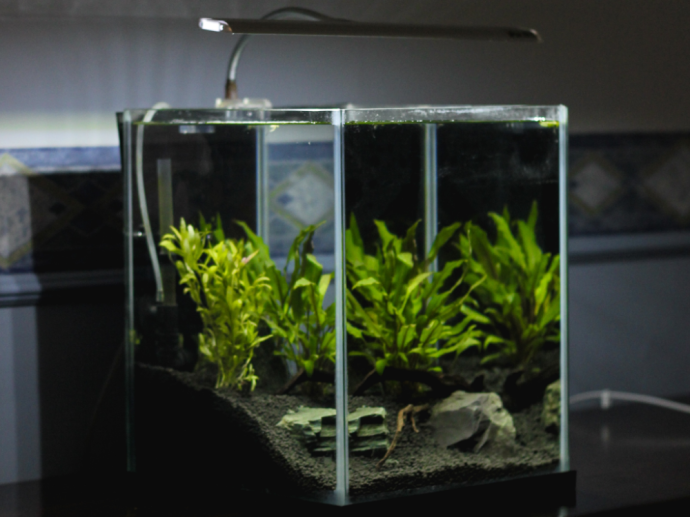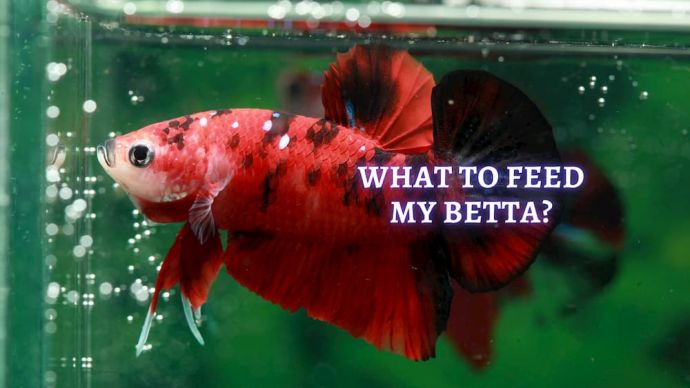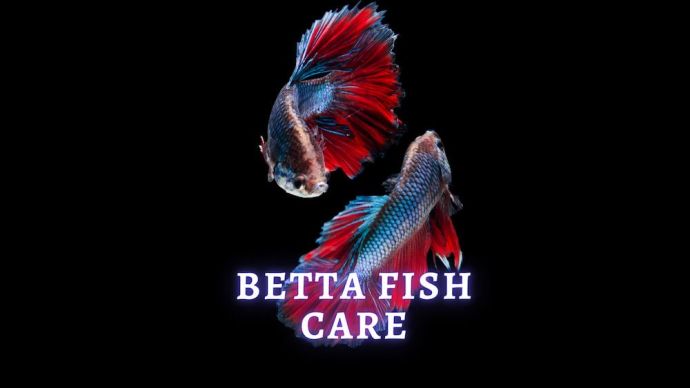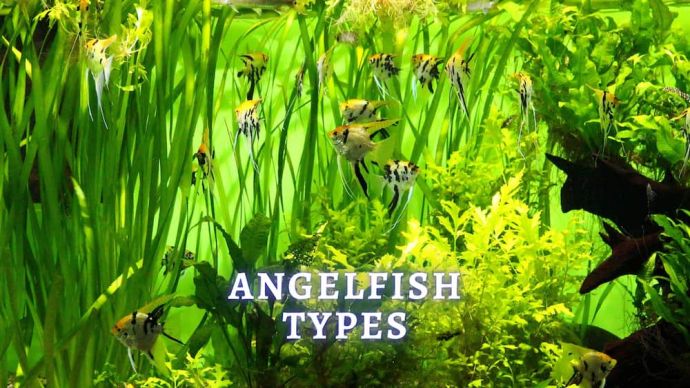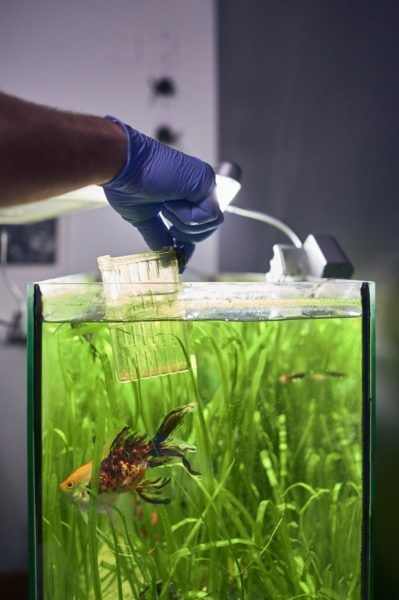Guppy Tank Mates
Written by:
Author: Vicki Smirnova
Vicki Smirnova is a professional writer and editor who adores animals and helps readers get along well with their pets. She has been working in digital media for more than 5 years and has great experience writing content about lifestyle, including pets. Vicki specializes in dog health and nutrition, cat feeding, dog training. She is an aquarium lover and is passionate to write about fish care at home. Also, Vicki headed several websites and worked as a news editor.
View all 245 articlesLearn about our editorial process and veterinary review board.
Viewed: 3392
Updated on: 03/09/2021
Guppies are very beautiful, small, viviparous fish. Some people like them very much, others don’t. Guppies are unpretentious, strong fish with beautiful tails. However, guppies are tiny and cannot defend themselves, so other fish often bite them.
About Guppies
Guppy (Poecilia reticulata), also known as millionfish and rainbow fish, is one of the most common types of aquarium fish. For novice aquarium owners, guppies are a great choice because of their hardiness and low price. Guppi is one of the world’s most widely distributed tropical fish and one of the most popular freshwater aquarium fish species. It is a member of the family Poeciliidae and, like almost all American members of the family, is live-bearing. [2]
Like many freshwater fish, guppies exhibit sexual dimorphism. Male guppies are smaller than females and have beautiful, colorful fins. Female guppies are not as bright.
Guppies get along well with other species. Detailed below are some of the best companions in the aquarium for guppies. [1]
It is best to keep the guppies separate and has an independent tank for newborn fish, and then your guppies will be happy.
Best Fish Compatible with Guppies
Guppies get along well with other species. Detailed below are some 15 best tank mates that can live with guppies:
1. Swordtails
Guppies and swordtails are fully compatible. Experience aquarists shows that swordtails biting the fins of the guppies. Keep small fish with larger relatives in a spacious aquarium with shelters and plants.
- Care Level: easy
- Gallons per fish: 3 — 4
- Temperature range: 22 — 26°С
- pH Range: 7 — 8
2. Poecilia
Viviparous fish that do not spawn, but immediately produce live offspring. To increase the population of Poecilia, you will need significantly more space in the aquarium — 18 — 20 gallons (75.71 l) — as well as good filtration and aeration of water in the aquarium.
- Care Level: easy
- Gallons per fish: 2 — 3
- Temperature range: 24 — 27°С
- pH Range: 7,0 — 8,0
3. Mollies
Popular and easy-to-care-for fish that even a novice aquarist can handle. Viviparous mollies are of average size and various colors depending on the species. They are perfect for an aquarium with a non-aggressive population.
- Care Level: easy
- Gallons per fish: 3 — 5
- Temperature range: 25 — 28°С
- pH Range: 7,5 — 8,2
2. Neons
Neon is a fish with a similar temperament and size. Guppies and neons will live together in the same aquarium. Remember that neons like soft water.
- Care Level: easy
- Gallons per fish: 2 — 3
- Temperature range: 23 — 25°С
- pH Range: 5,5 — 5,7
3. Danio
Danio and guppy get along well together. Both types are compatible, and character. Active and curious neighbors will find a lot in common, and it is not difficult to keep Danio.
- Care Level: easy
- Gallons per fish: 2 — 3
- Temperature range: 17 — 25°С
- pH Range: 6,7 — 7,0
4. Tetras
Tetras are very peaceful and playful. Tetras live peacefully with guppies, and there are no clashes between them. However, be careful with tetras-congo, as this species bites the fins of smaller fish. There is also a vampire-tetra, a predator, and the worst neighbor for a small fish.
- Care Level: easy
- Gallons per fish: 3 — 5
- Temperature range: 24 — 26°С
- pH Range: 6,0 — 7,0
5. Botia
These fish are compatible with guppies, as they have standard features: resistance to diseases, unpretentiousness, calm disposition, and low body size. These fish get along well with guppies in the aquarium.
- Care Level: medium
- Gallons per fish: 5 — 7
- Temperature range: 24 — 30°С
- pH Range: 5,0 — 7,0
6. Rainbows
These small, beautiful fish get along well with guppies. Water parameters suitable for rainbows are also ideal for guppies.
- Care Level: medium
- Gallons per fish: 5 — 7
- Temperature range: 20 — 30°С
- pH Range: 5,5 — 8,0
7. Lampeye Killifish
Fish of this species get along well with guppies, and the character of the fish is harmless. Its peaceful disposition does not prevent fish from being carnivorous.
- Care Level: easy
- Gallons per fish: 4 — 6
- Temperature range: 24 — 29°С
- pH Range: 6,5 — 7,0
8. Acanthophthalmus Kuhlii
This fish is very similar to a snake. It lives on the bottom. One by one, acanthophthalmus is very shy. These fish are mostly active only at night.
- Care Level: medium
- Gallons per fish: 2 — 4
- Temperature range: 26 — 30°С
- pH Range: 5,5 — 7,5
9. Cherry Shrimp
A small crustacean, Cherry Shrimp reach a size of 1 — 2 inches (5.08 cm) in length. Their coloring is often pinkish-red, and the claws and paws are covered with light spots that form a characteristic pattern. Males and females differ in size — the males are usually larger, thicker and more brightly colored.
- Care Level: easy
- Gallons per shrimp: 2 — 3
- Temperature range: 22 — 25°С
- pH Range: 6,5 — 8,0
10. Rasbora Fish
Rasbora is a schooling fish that is best kept in the company of at least 6 others. When kept alone, the fish face serious stress, becoming fearful and nervous. A group of 8 to 10 will feel great in an aquarium with a volume of 20 to 25 gallons (94.64 l).
- Care Level: easy
- Gallons per fish: 2 — 5
- Temperature range: 23 — 28°С
- pH Range: 5,0 — 7,0
10. Snails
Snails are large and must be kept in a closed aquarium without holes; otherwise, the snails can get out of the aquarium, searching for a place to lay their eggs. When kept in an aquarium with a water temperature of 18 to 25 degrees, they can live for 3 to 5 years. It is not recommended to place snails in the same aquarium as active barbs, large cichlids, tetrapods, and botii, as these types of fish can damage snails, eat them or prevent them from getting out into the air to breathe.
- Care Level: easy
- Gallons per snail: 3 — 5
- Temperature range: 23 — 25°С
- pH Range: 6,5 — 7,8
11. Betta
The Betta fighting fish is one of the most popular and beautiful types of fish. You can keep it starting with a table aquarium with a volume of 1 gallon (3.79 l) per one fish. The presence of aeration in aquariums with such fish is unnecessary; this allows you to use the aquarium without an aeration system. However, a water filtration system is required to keep the water clear.
- Care Level: easy
- Gallons per fish: 1 — 7
- Temperature range: 24 — 26°С
- pH Range: 6,0 — 7,5
12. Cardinal Tetra
Cardinal Tetra schooling fish must be kept in a group of 6 to 8, which requires an aquarium with a volume of 10 gallons (37.85 l) or more. When kept in a flock of fish, they are less timid and calmer. Cardinals do best in an aquarium with live plants and bright lighting.
- Care Level: medium
- Gallons per fish: 3 — 5
- Temperature range: 15 — 22°С
- pH Range: 6,5 — 7,8
15. Corydoras
These small catfish with a peaceful nature live in the lower layers of water. Most of the time, the fish do not contact, adhering to their lifestyle. The corydoras adapt well to the conditions of detention.
- Care Level: medium
- Gallons per fish: 4 — 5
- Temperature range: 22 — 25°С
- pH Range: 6,0 — 7,5
16. Barbus
Barbus are partially compatible with guppies. However, Barbus likes to bite the fins of small fish. It is not difficult to take care of these fish.
- Care Level: easy
- Gallons per fish: 3 — 4
- Temperature range: 20 — 25°С
- pH Range: 6,5 — 7,5
17. Gourami
Guppies are also partially compatible with peaceful types of gourami (chocolate, ocellatus). There must be enough space for these two types. Carefully make sure that the water parameters are suitable for both models.
- Care Level: medium
- Gallons per fish: 2 — 10
- Temperature range: 25 — 27°С
- pH Range: 6,0 — 7,5
18. Dwarf gourami
Guppies can live with gourami if two types have enough space in the aquarium. At first, the gourami acts shy and tries to hide. Also, it is easy to care for gourami.
- Care Level: medium
- Gallons per fish: 3 — 4
- Temperature range: 24 — 28°С
- pH Range: 6,0 — 7,5
19. Cockerel fish
Cockerel fish are famous for their aggressive temperament. If your aquarium has enough space, then guppies can get along with roosters. There must be a lot of covers. For cohabitation of different species, it is better to choose females — they are less aggressive. The content of the fighting fish has its characteristics.
- Care Level: medium
- Gallons per fish: 2 — 5
- Temperature range: 24 — 26°С
- pH Range: 6,0 — 7,5
20. Gymnocorymbus
Gymnocorymbus are mobile fish that live in a flock. This species is partially compatible with small guppies. These fish show aggression towards smaller neighbors if the number of fish in the species pod is less than eight.
- Care Level: easy
- Gallons per fish: 2 — 4
- Temperature range: 22 — 26°С
- pH Range: 6,0 — 7,5
21. Plecostomus
These catfish are aggressive, but they don’t touch little guppies. Catfish may not intentionally swallow a neighbor in the aquarium. In a large aquarium, guppies and catfish can live well.
- Care Level: medium
- Gallons per fish: 40 — 50
- Temperature range: 22 — 26°С
- pH Range: 6,2 — 7,2
READ MORE: Best Freshwater Aquarium Plants
Tank Mates for Guppies to Avoid
Predators perceive small fish as food. Cohabitation with large and aggressive fish is an exception to the rule. There are cases of keeping them with scalars if the fish have grown together.
1. Angelfish
These two species get along well together until the angelfish has grown. The larger angelfish will probably consider guppies a light snack.
- Care Level: medium
- Gallons per fish: 15 — 20
- Temperature range: 22 — 26°С
- pH Range: 6,5 — 7,5
2. Cichlids
Cichlids are usually aggressive, fast, and like to eat small fish. For most cichlids, guppies will be more like food. Besides, cichlids tend to be quite territorial. They allocate a place in the aquarium and call it their own. Guppies can swim into the territory of the cichlid, and it will not end well.
- Care Level: medium
- Gallons per fish: 15 — 25
- Temperature range: 22 — 27°С
- pH Range: 6,0 — 8,0
3. Goldfish
The most recognizable and one of the most popular types of aquarium fish. The size of an adult fish in good condition is about 5 to 6 inches (15.24 cm). Goldfish are considered long-lived among aquarium species and have an average life span of 13-15 years; the maximum recorded life record for a goldfish is 43 years.
- Care Level: medium
- Gallons per fish: 16 — 22
- Temperature range: 18 — 23°С
- pH Range: 6,0 — 8,0
In general, guppies tend to get along well with different fish if they don’t have a big enough mouth to swallow the guppies. Avoid abundant and aggressive species.
READ MORE: Aquarium Canister Filters Reviews
General rules for Compatibility with Guppies
When choosing fish for shared living with guppies in the same aquarium, you need to know some general rules:
- The aquarium should only have fish with similar temperament and behavior. Male guppies usually have long and luxuriant fins, so those neighbors who can pinch them should not live with them. Guppies are not compatible with aggressive, fast types; otherwise, the stress and physical exhaustion of victims cannot be avoided. [3]
- The diet and water requirements should also be suitable for all aquarium inhabitants. Check the pH level, hardness, and temperature of the water environment.
- It is better to keep all the fish in a large tank with enough space for swimming and hiding. One fish requires an average of 50 liters of water.
- Small bottom-dwelling fish species can be kept with viviparous guppies that rarely swim to the bottom.
Article Sources:
- “Guppy – Wikipedia.” From Wikipedia, the Free Encyclopedia, 3 Sept. 2020, en.wikipedia.org/wiki/Guppy
- “Guppy”. Encyclopædia Britannica Online,13 May 2008, britannica.com/animal/guppy
- “Influence of Water Velocity on the Display Behavior of Male Guppies, Poecilia Reticulata”—. OUP Academic, 1 Oct. 1996, academic.oup.com/beheco/article/7/3/272/178975
 Freshwater Fish 15 Best Fish for Outdoor Ponds: Best and Easiest to Take Care Of
Freshwater Fish 15 Best Fish for Outdoor Ponds: Best and Easiest to Take Care Of - 69
- 0
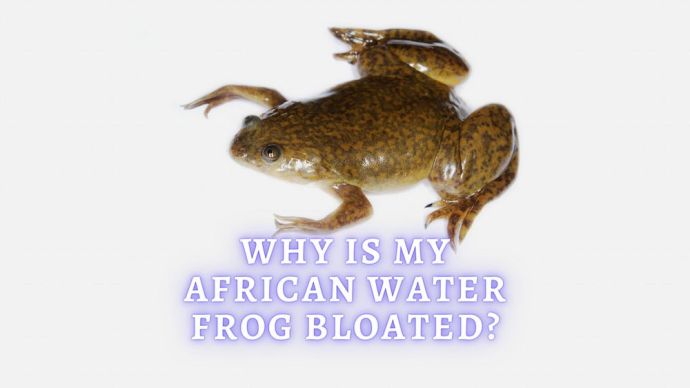 Freshwater Fish African Clawed Frog Bloat: Why Is My African Clawed Frog Bloated?
Freshwater Fish African Clawed Frog Bloat: Why Is My African Clawed Frog Bloated? - 70
- 0









